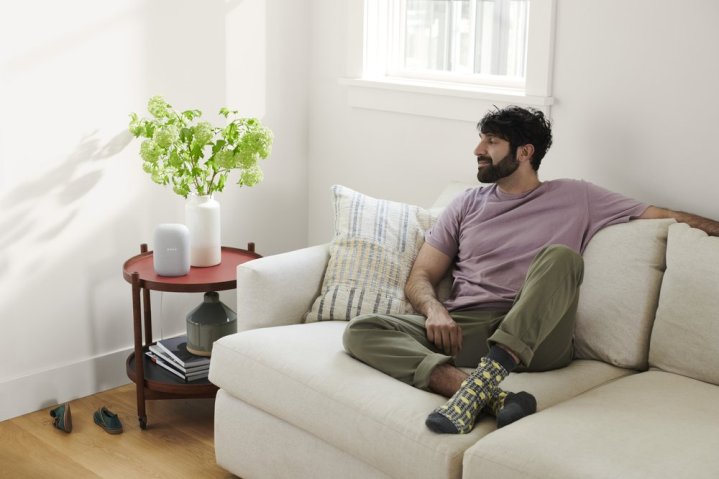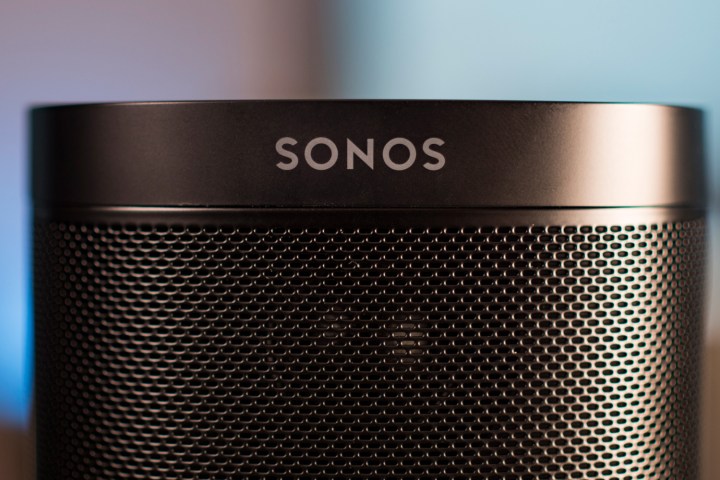Smart displays and smart speakers often serve the hub of a connected smart home. Giving you the ability to issue commands to other gadgets, quickly check up on the local news, or stream your favorite music, smart displays and smart speakers are incredibly popular. The lineup of devices is better than ever today, with Amazon, Google, Sonos, Apple, and other big-name manufacturers churning out highly reviewed products.
But which is best for your home, a smart display with video capabilities or a simple smart speaker with robust audio output? Here’s a closer look at both to help you decide which one better fits your needs.
Size and Design

Smart speakers don’t have to pack a touchscreen, so their designs are generally smaller and more minimal. They also have a lot of design variety, from the orb-like Echo 5th Gen to the obelisk shape of the Nest Audio. They can come in small versions like the Nest Mini or HomePod Mini, and some options are even portable with a rechargeable battery so you can take them with you. One of the smallest smart speakers is the Echo Pop, standing less than 4 inches tall and 4 inches wide.
Smart displays give up these options for the sake of the touchscreen. That’s a powerful feature, but it does limit design, and experiments like the rotating Echo Show 10 (or the Facebook/Meta Portal devices) tend to be more awkward than not. They’re also not found in portable designs. The Echo Show 8 is a fairly standard size for a smart display and measures nearly eight inches wide and 5.5 inches tall.
Winner: Smart speakers
Sound

The smart speaker design has another advantage: There’s more room for speakers, as well as easier placement options. That allows for Amazon’s 360-degree sound design for the Echo or the arrays of tweeters and woofers found in speakers like the Apple HomePod or Echo Studio. This often leads to superior sound, making smart speakers an excellent option for pumping a room full of tunes.
Smart displays, however, are more likely to hide speakers away in the base, where they can still do a fine job of playing music but can’t quite compete with smart speakers. Attempts like the Echo Show 10, which perches the screen above the speaker base, are better at this, but in general, smart displays fall behind on the audio side.
Winner: Smart speakers
Smart features and interactivity

Both smart speakers and smart displays come with voice assistants, typically Google Assistant or Alexa (or in some cases, both), although the HomePod line offers Siri, too. The voice assistants themselves are largely the same. You can give the same commands, ask the same questions, and do everything from set timers to start voice chats.
But here is where the touchscreen starts to become so useful. They add a whole other layer of capabilities that smart speakers just can’t accommodate. You can stream video, allowing you to watch how-to videos, YouTube music videos, your favorite shows (a number of streaming apps are usually supported), news stories, and more. You can also browse visual results from the internet and select options to read more. Since smart displays typically come with cameras, you can also choose video chats instead of audio chats. While voice assistants can offer interactive games with either device, smart displays have more immersive games thanks to the many options the touchscreen provides. When not in use, the touchscreen can show a slideshow of photos, keep you updated about the weather, and more.
Winner: Smart displays
Placement and positioning

Where are you going to put your voice assistant device? Both smart speakers and smart displays have different strengths here. Smart speakers are generally more versatile. They don’t need to be close by to project sound, so they can be placed on a shelf, countertop, entryway table, and so on. Smaller versions can make great bedside alarm clocks (the newest Echo Dot even has an LED clock on it) or desktop voice assistants.
Smart displays need to be close at hand, close enough to touch and clearly view the screen, but you also want them nearby. They do better on a kitchen counter, on an office desk, on a central counter, and so on. The screens have also gotten larger, culminating in the current Echo Show 15, which is large enough to be placed on the wall like a portrait. You can mount some smart speakers on the wall too, but the effect isn’t quite the same.
Winner: Tie
Privacy

Privacy is always a big question with voice assistant devices: Can you trust the device to keep your personal information secure? Even worse, is there a chance that a smart speaker or smart display could spy on you, recording your audio or recording video of its surroundings unprompted?
Fortunately, voice assistants are programmed to only record commands following their wake words like “Alexa” or “Hey Google,” and you can adjust if these recordings are kept or not. Outside of someone hacking into the speaker or display (don’t buy these devices used), there’s not much chance of the device “spying” on anyone. The closest they get is features like Alexa’s “Drop In” feature, which allows select friends and family to initiate calls on Echo devices, and you can disable this option whenever you want.
But manufacturers know this isn’t quite enough. Today’s smart displays also come with buttons and shutters so you can manually disable mics and cameras so they can’t be used even if the software tries turning them on.
Winner: Tie
Pricing and availability

If you want to save, which device is right for you? Standard smart speakers are typically right around $100, although there are exceptions like the Apple HomePod, which costs $300 and is more expensive than a large portion of smart speakers.
The mini versions of smart speakers can vary from $50 (the Nest Mini) to $100 (the HomePod mini) and are the best way to save if you are looking for deals.
Smart displays, meanwhile, can start around $100 (the Nest Hub) and can cost much more, up to $250 for something like the Echo Show 15. You won’t be finding any under $100 unless it’s incredibly small, like the Echo Show 5.
Winner: Smart speakers
Which smart device comes out on top?
Smart displays are easily the best choice in certain situations, such as a kitchen companion, a desktop device to stream shows while you are working, or an interactive hub for kids and grownups to play with. They also have additional value if you like video chats or want to stream live footage from your security cameras.
But for most other purposes, smart speakers win out. They come in a wide variety of sizes and styles, are generally more affordable, and tend to have better speaker designs. You can also place them just about anywhere within listening distance.
Editors' Recommendations
- Should you buy a new smart lock or retrofit your existing deadbolt?
- Arlo Pro 5S vs. Ring Stick Up Cam Pro: Which is the best premium security camera?
- Ring Pan-Tilt Indoor Cam vs. Ring Stick Up Cam Pro: Which is better for your home?
- Roborock S8 MaxV Ultra vs. Roborock S8 Max Ultra: Which is the better robot vacuum?
- Roborock S8 MaxV Ultra vs. Narwal Freo X Ultra: Which is the best premium robot vacuum?



